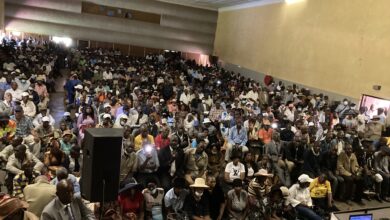
The media industry, print in particular, stood on shaky ground before the Covid-19 outbreak leading to a total lockdown in March 2020.
Since then, the whole economy went on its knees and newspapers laid off workers, reduced print runs, saw a huge slump in advertising which is a big support system.
The biggest newspaper stable in the country Zimbabwe Newspapers (Zimpapers) stopped printing its Bulawayo based tabloid B Metro opting for an online presence despite the publication having low traffic. Its Harare tabloid H Metro was also put on hold as a print newspaper although it has returned on the streets with only 16 pages down from 32.
The flagship dailies, The Herald, printed in Harare but regarded as a national newspaper, and The Chronicle (Bulawayo) too reduced their print runs. The stable’s weeklies the Sunday Mail and Sunday News did the same.
Umthunywa published in IsiNdebele and the ChiShona Kwayedza have become totally off the radar particularly because already the two combined could not account for 400 sold copies nationwide before the pandemic. Now online presence is mission impossible.
“During the first lockdown vendors were not on the streets and there was very limited movement and so printing newspapers was hopeless. We had to think fast but there was a wait and see approach because the pandemic affected everyone,” said a senior journalist at The Herald.
Associated Newspapers of Zimbabwe, publishers of The Daily News and Financial Gazette also shut down their printing press. They also printed South Africa’s Sunday Times (Zimbabwe Edition) (owned by Arena Holdings) and the Financial Gazette also carried Arena Holdings magazine The Financial Mail. The South African newspapers are still skeptical about returning to Zimbabwe because of the after effects of Covid-19 on the media.
ANZ laid off workers and temporarily shut down their Bulawayo Bureau because it was no longer business as usual.
“There was a need to cut down overheads and that meant ‘resting’ reporters and becoming more stringent with resources,” said a middle management employee at ANZ.
It was the same for Alpha Media Holdings publishers of News Day, The Standard and the flagship Zimbabwe Independent.
“Working from home was not and still is not good for news gathering because it means reporters are not managed the way we are used to and access to resources such as computers, internet and phones is limited,” said a journalist.
AB Communications owned Business Times saw the departure of senior journalists as the newspaper only printed as and when it carried company financial results which are adverts with relatively huge revenue. But with the economy shut down, there was little to publish from companies’ performance results.
Austerity for prosperity
Putting more emphasis on online presence was never going to be easy for local newspapers. It’s still not easy.
“We saw an increase in traffic particularly because Covid-19 is the biggest story of our time. Everyone even up to now wants updates on Covid-19 but as newspapers people tend to be skeptical because we report what government pushes out as the official position to issues related to the pandemic. Our situation was made worse by the criminalization of information related to Covid-19.
“That is why we were hardly the most sought-after source of information. Social media took over, rumours and gossip had more weight than actual news. The fact that governments now issue statements on social media too meant less interest in what we reported about the statements,” said a journalist from ANZ.
With pressure came a new phenomenon that’s keeping newspapers relevant. The PDF newspaper or E (electronic) newspaper. All main newspapers in Zimbabwe have taken this up including some online publications too. The concept around it is that “it’s a high-breed medium between a print and online newspaper,” said Thando Nkomo, a Strategic Communications and Media Economics lecturer at the National University of Science and Technology (NUST).
He added that the arrival of the E newspaper the world over shows that, “the newspaper is flexible and highly adaptable.”
“From the look of it, the local newspapers have caught onto the e-distribution of newspapers, something that has been happening across the world since around 2010 thereabouts.
“It’s quite a good idea given that audiences today are consuming most of their ideas, information and news content on mobile devices. It thus makes more sense to optimise newspapers for mobile devices.
“The PDF versions are quite versatile as they are available for offline reading as opposed to reading online. So, the PDF versions do enhance accessibility of these newspapers despite challenges of the prohibitive cost of data locally,” he said.
From a business point of view, the PDFs offer newspapers an opportunity to explore a new revenue model based on the traditional advertising revenue model. “It will be interesting to see how this develops into a viable alternative to the printed paper,” said an editor at Zimpapers.
Newspapers hardly reveal their true circulation figures because of advertiser perception. Publications such as B Metro that are not printing claim to be posting profit margins because the newsprint factor is cut out and adverts that they carry sustain the business model.
This could not be far from the truth. Zimpapers chairman Tommy Sithole in a statement for the first six months of 2020 when the pandemic resulted in a total lockdown said online platforms saved the day.
“Zimpapers’ digital platforms led the national narrative on the pandemic primarily through all the 10 websites while debate on issues covered was live across its social media platforms,” he said.
But that didn’t result in growth of the business because Zimpapers recorded a 6,8 percent revenue decline, after adjusting for inflation, to $256,6 million compared to $275,4 million in the same period last year due to lower demand arising from the Covid-19 lockdowns.
Covid-19 effect on journalists
Speaking to CITE on World Press Freedom Day, the national director of the Zimbabwe National Editors Forum (ZINEF), Njabulo Ncube said despite the challenges faced by journalists’ media non-governmental organizations took it upon themselves to assist.
“The media NGO sector under the auspices of the Media Alliance of Zimbabwe played a pivotal role in sourcing personal protective equipment (PPEs) for Zimbabwe media otherwise it was going to be a disaster. Indeed, we lost comrades due to Covid-19 at a time the government has escalated its campaign to criminalize the journalism profession,” he said.
He added that working from home has been a challenge, “largely due to the High cost of data for some, particularly freelance journalists. Poor internet connectivity has hampered our work in an era where virtual meetings are the new normal. It is also on record that big media houses annulled contracts of freelance journalists in the mainstream media.”





